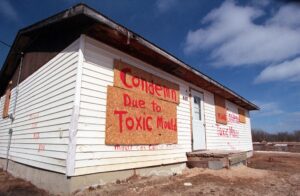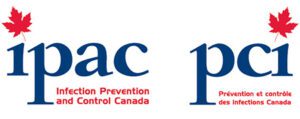When buying a home insist on an Indoor Air Quality Test.
When buying a home insist on an Indoor Air Quality Test.
When buying a home insist on an Indoor Air Quality Test to insure you understand completely if the home you are buying has elevated levels of mold or other contaminants.
Conducting an Indoor air quality (IAQ) test is often disregarded during the sales process – and even after occupancy. But proactive – rather than reactive – Indoor Air Quality tests have the potential to reduce liability, improve tenant retention, and increase property values, (https://www.bobvila.com/articles/how-to-test-air-quality-in-your-home/), (https://www.canada.ca/en/health-canada/services/air-quality/improve-indoor-air-quality-in-your-home.html)
This post provides information and guidance on the most common air quality issues and what potential property owners can do to protect themselves and their families from potentially serious health conditions and liability risks.

What smells so Musty? Will an Indoor Air Quality Test help?
Indoor air quality issues in residential and commercial properties are normally identified via an unpleasant or overpowering odor. While the cause of the odor can be benign, at other times, it may prove to be a serious health risk. The key is to never ignore an unfamiliar odor.
Musty/Moldy Odors:
Musty/moldy odors are likely attributed to actual mold conditions in a water/moisture-damaged building or building materials. Mold grows on organic matter when afforded sufficient moisture. Carpet and sheetrock may be the two most common materials impacted by mold. The musty/moldy odor is created when minute amounts of vapors are released by the mold. https://mapleleafmold.ca/are-you-worried-…omes-air-quality/
Chemical Odors
Chemical odors are attributed to volatile organic compounds (VOCs) found in cleaning products, paints, varnishes, adhesives, and the chemicals (such as formaldehyde) used to treat some textiles. Newly painted surfaces and new carpeting normally release VOCs. Some people are sensitive to these vapors, resulting in a reaction that may cause anything from a mild rash to serious breathing problems. Dangerous reactions may also occur when certain cleaning compounds are mixed together. The classic example is the mixing of bleach and ammonia, which causes the instantaneous release of hydrogen chloride gas – a substance that is both toxic and caustic.
Environmental Tobacco Smoke
Another common indoor air quality issue is cigarette, cigar, or pipe smoke, also known as “secondhand smoke” or “environmental tobacco smoke” (ETS). Because tobacco products contain nicotine, benzene, and other harmful chemical contaminants, prolonged exposure to secondhand smoke has been linked to serious health issues.
Rotten Egg Odor
These odors are caused by sulfur compounds that are generated when organic material decomposes in the absence of oxygen. In most cases, if you can smell sulfur, the concentrations are not toxic. When sulfur reaches a toxic level, it is often too concentrated to emit an odor. Therefore, when you smell sulfur, you should identify the source of the problem – possibly a sewage, ground water, or plumbing issue.
Odorless Sources that Affect Indoor Air Quality
There are three common gases that are odorless, colorless, and tasteless: carbon monoxide, methane, and radon. The first – carbon monoxide – is a byproduct of incomplete combustion that can be emitted by fuel-burning heaters, automobile exhaust, and the like. Because carbon monoxide is lethal, and because it is undetectable by human senses, carbon monoxide detectors should be installed and maintained in homes and facilities where humans work and reside. Carbon monoxide detectors are, in fact, required in the State of New Jersey in all buildings, including schools, where there is a fuel-burning appliance or attached garage.
Radon is also a colorless, odorless gas created underground by the natural degradation of Uranium. It is prevalent in many portions of New Jersey and is a known carcinogen. As a soil gas, radon enters via the cracks and crevices in basements, and the only way to know if it is present is through testing. Radon is remediated by installing air exchange units that bring in outside air to replace air in the basement or ground floor.
Methane is a highly combustible organic gas that poses a severe fire and explosion hazard. It is generated when organic material decomposes in the presence of oxygen. Methane is colorless, odorless, and tasteless and is found beneath landfills, marshes, septic systems, and sewers.
Other Considerations
In addition to VOCS, gases, and second-hand smoke, there are two other substances that can have a negative impact on indoor air quality: asbestos and lead.
Asbestos:
this fibrous, naturally occurring mineral was used as a component of numerous building materials in the U.S. for decades. Asbestos is an inert material that can remain harmless in a building for many years, only becoming an issue when it is disturbed through cutting, sanding, or other remodeling activities. These activities cause asbestos fibers to become airborne, significantly increasing the risk of inhalation. Chronic inhalation of asbestos is proven to cause serious respiratory illnesses and cancer. If asbestos is suspected, proper precautions must be taken to identify its presence and to have it removed by a licensed asbestos abatement contractor. Removal by unqualified individuals poses the significant risk of releasing asbestos fibers into the air and endangering the health of anyone who inhales it.

Lead:
A chemical element most commonly associated with paint and pipes, lead can become an indoor air quality issue when these materials degrade or are removed through scraping or sanding, thus turning into airborne dust particles. Lead can also become airborne when heated, such as in a soldering process, and it can leach from pipes into drinking water, resulting in toxic accumulation in the body. High concentrations of lead can lead to serious health issues, particularly in children.
When to Test
The most obvious time to test for indoor air quality issues is when a noticeable odor or visual evidence is detected. However as noted above, many dangerous substances are invisible and undetectable to human senses. Evidence of their presence may be a negative health reaction with an unidentifiable source or a long-term, chronic illness. Proactive testing of indoor commercial and residential environments is often the only way to ensure a safe environment. Doing so will reduce health risks and liability, improve tenant retention, and increase property values.
The Testing Process
Depending on the type of IAQ situation, samples are typically collected and then submitted to a laboratory to confirm the presence or absence of a contaminant and the extent of the contamination. Chemical analyses for VOCs are compared to the Ontario Ministry of the Environment’s list of volatile organic compounds for residential and commercial building environments to determine if any exceedances are present and if remedial steps are needed. Radon testing can be performed by either the property owner or a certified radon specialist. Use of a specialist is highly recommended if results will undergo some form of scrutiny, such as by a buyer and their attorney.
How to Fix an IAQ Issue
When the source of the contamination is determined, remediation may entail removal, cleaning, disinfecting/sanitizing, sealing, or encapsulating building materials. Remedial strategies are diverse and should be discussed with a qualified environmental consultant on a case-by-case basis.
How Do I Protect Myself?
IAQ issues appear frequently and they are always resolvable. Proactive IAQ testing by both buyers and sellers is highly recommended as one of the first steps of the sales process. This provides peace of mind to all parties involved and helps to ensure that the seller will receive the highest possible price for their property. And remember, Home Inspectors are not Mold Inspectors, https://mapleleafmold.ca/home-inspectors-…-mold-inspectors/
IAQ issues create objections that can stall or stop a real estate deal. Maple Leaf Mold Inc. helps property owners, realtors, buyers, and sellers to identify potential sources of concern and determine the best course of action BEFORE they can harm the deal. Call 416.254.7256 for Maple Leaf Mold Inc. expert advice on the house.

Maple Leaf Mold Inc. is a certified mold / asbestos removal and biological disinfection / air analysis company located in Toronto that uses certified IICRC technicians for all testing and remediation projects.
We are a professionally licensed firm experienced in testing, verifying and removing Mold / Asbestos / Lead and other environmental contaminants as well as providing disinfection services to control and kill biological contaminants.
Call 416-254-7256 to talk with us about your issue anytime.



